Grafting is an ancient horticultural technique that allows you to grow two or more plants on a single rootstock, taking advantage of the strengths of each plant. Combining tomatoes and brinjals (also known as eggplants) into one plant is an exciting and innovative way to maximize space in your garden, especially if you have limited area to grow vegetables. In this guide, we’ll explore how to graft these two plants together, step by step, to create a hybrid plant that produces both tomatoes and brinjals.
Understanding the Basics of Grafting
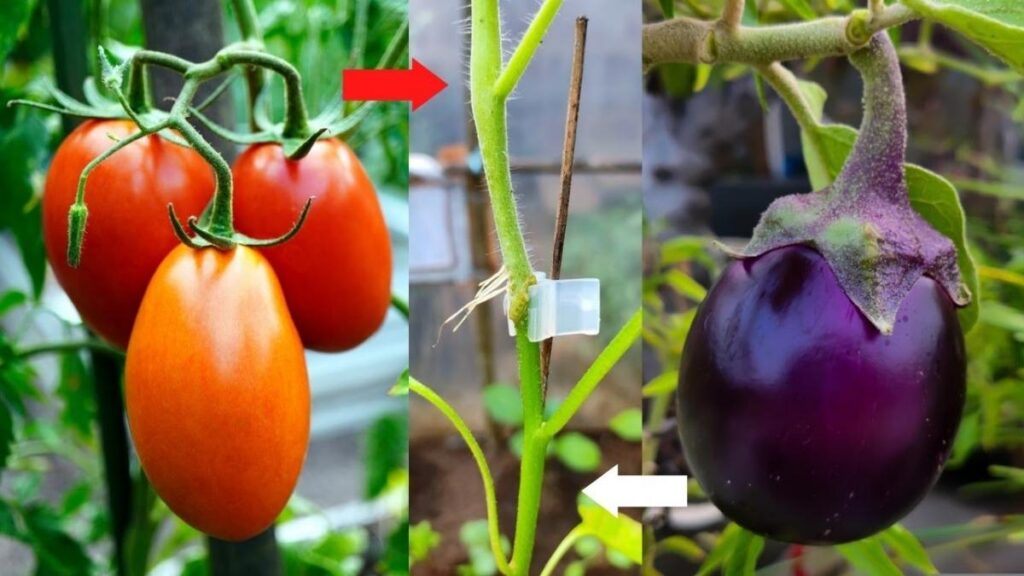
Before we dive into the process of grafting tomatoes and brinjals, it’s important to understand the basic principle behind grafting. Grafting involves joining two plant parts: the rootstock (the part that forms the roots and supports the plant) and the scion (the part that produces the fruit). The key to successful grafting is ensuring that the vascular tissues of the rootstock and scion fuse together properly, allowing water, nutrients, and sugars to move between the two parts.
In this case, tomatoes and brinjals belong to the same family (Solanaceae), which makes them compatible for grafting. The rootstock could be a hearty variety of tomato, and the scion could be a tomato or brinjal variety, depending on which fruits you want to grow.
Choosing the Right Rootstock and Scion
The first step in grafting tomatoes and brinjals is selecting the right rootstock and scion. The rootstock should be a strong, healthy variety that is resistant to diseases and pests. Typically, a hardy tomato variety is chosen for the rootstock because tomatoes have strong root systems that can support other plants well.
For the scion, you’ll need to choose a tomato or brinjal variety that you want to grow on the plant. If you’re aiming to produce both tomatoes and brinjals, you may need to graft each onto different parts of the rootstock, using two scions. This technique is known as “multiple grafting,” and it allows you to grow two different crops on the same plant.
Preparing the Plants for Grafting
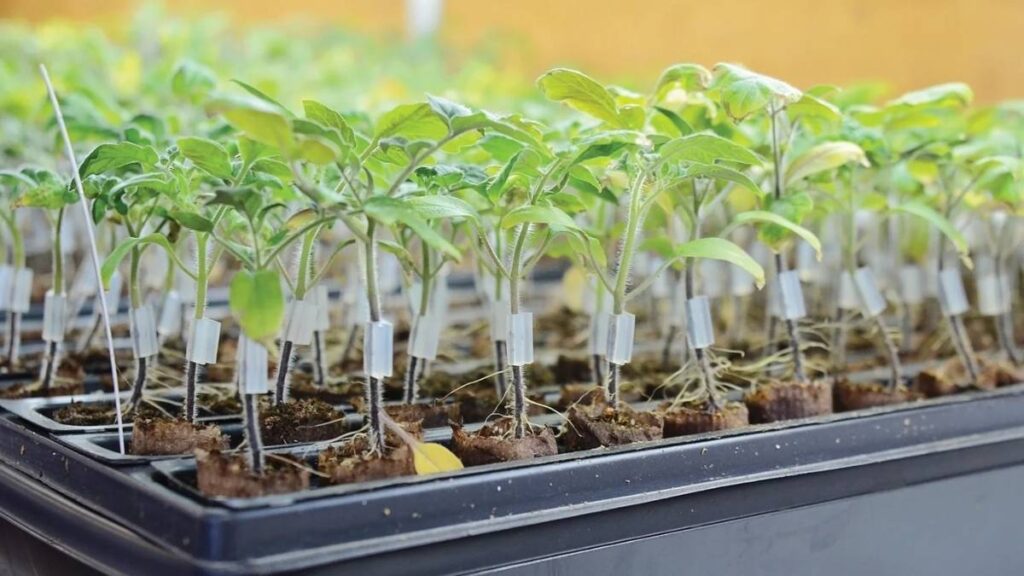
Once you’ve selected your rootstock and scion, it’s time to prepare the plants. The first step is to cut both the rootstock and the scion to the correct lengths. For the rootstock, you’ll want to make a clean, horizontal cut at the desired height. For the scion, a slanted cut is usually made, which creates more surface area for the tissues to fuse.
Ensure that both the rootstock and scion are young, healthy, and free from diseases. The plants should be actively growing, but not in the flowering or fruit-bearing stage, as they need energy to heal and grow together. This is the most critical stage, as clean cuts and precise alignment of the plant tissues are necessary for successful grafting.
Grafting the Tomato and Brinjal Plants
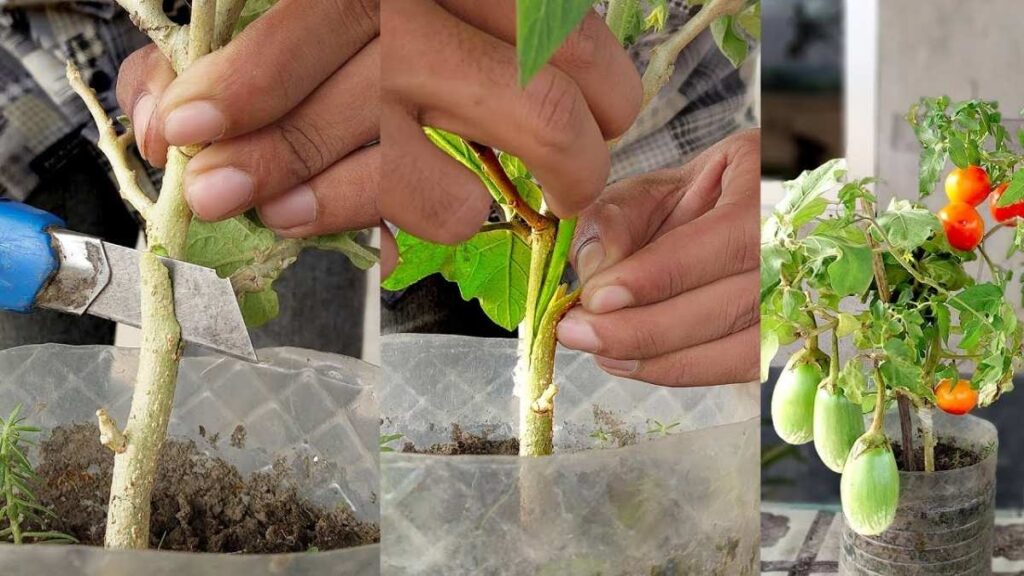
There are several methods of grafting, but one of the simplest and most commonly used for grafting tomatoes and brinjals is the “splice graft.” Here’s how you can do it:
- Cutting the Rootstock and Scion: Start by cutting the top of the rootstock with a straight cut. Then, cut the scion at a slanted angle, typically around 45 degrees.
- Aligning the Scion and Rootstock: Match the cambium layers (the thin layer just below the bark that is responsible for transporting nutrients) of the rootstock and scion. This is the most critical part of grafting, as the success of the graft depends on these layers fusing.
- Joining the Parts Together: Once the cuts are made, carefully join the rootstock and scion together. Make sure the cambium layers are in full contact with each other. If you’re grafting multiple scions onto one rootstock, repeat this process for each scion, ensuring they are placed in different positions on the stem.
- Securing the Graft: After joining the parts, secure the graft with grafting tape, rubber bands, or a grafting clip to hold the scion and rootstock together. The tape should be snug enough to keep the graft in place, but not too tight to damage the plant tissues.
- Creating a Humid Environment: To prevent the graft from drying out, it’s important to maintain a humid environment around the grafted area. You can use a plastic bag or a humidity dome to create this environment. Make sure the graft is kept in a warm and bright place, but out of direct sunlight, until it heals.
Caring for the Grafted Plant
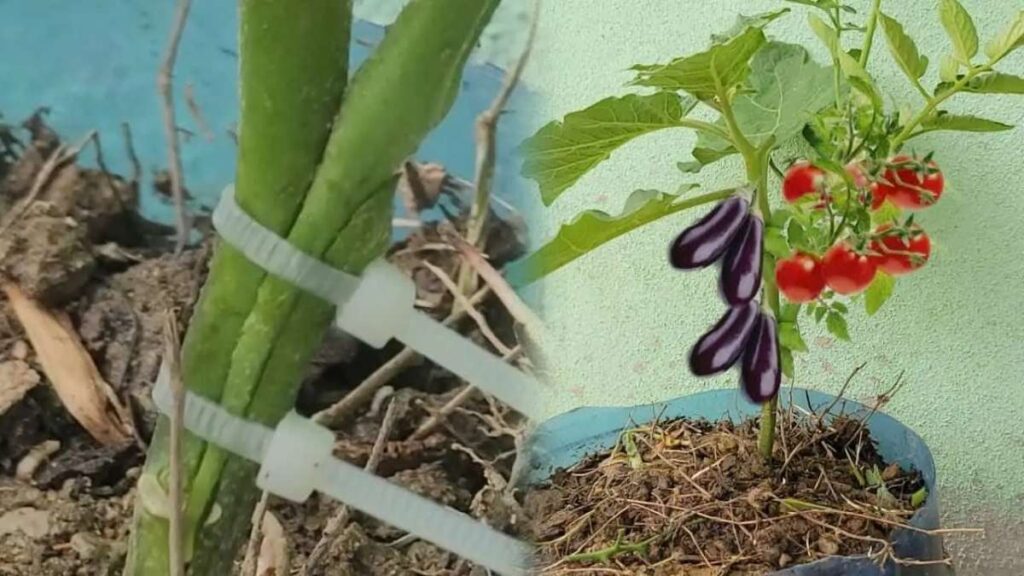
Once the graft is done, it’s crucial to give the plant the best care to ensure successful healing and growth. Here are some key points to consider:
- Watering: Water the grafted plant gently to keep the soil moist but not waterlogged. The grafted area is sensitive, so avoid over-watering, which can lead to rot, or underwatering, which can cause the plant to dehydrate.
- Fertilization: Use a balanced, organic fertilizer to feed your grafted plant. Since the rootstock provides the nutrients, you want to make sure it’s getting everything it needs to support both the tomato and brinjal scions.
- Protection: Keep the plant safe from pests and diseases. You might want to protect it with a physical barrier, like a netting or a plant cover, especially in the early stages. Also, monitor the graft site for any signs of stress, such as wilting, yellowing, or browning.
- Pruning: Once the graft begins to heal and grow, remove any suckers or shoots that emerge from the rootstock below the graft. This ensures the plant’s energy is focused on the scion and promotes healthy growth.
Harvesting Tomatoes and Brinjals
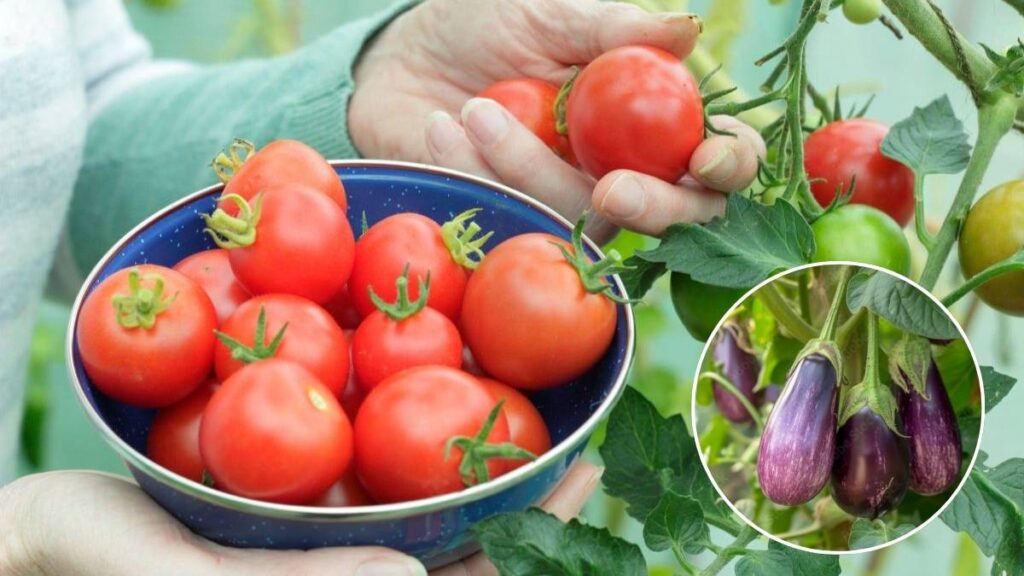
As the grafted plant matures, it will begin to produce both tomatoes and brinjals. The time it takes for the graft to bear fruit will depend on the varieties of tomatoes and brinjals chosen, but typically, you can expect fruit in 60 to 80 days after grafting.
It’s important to note that the tomato and brinjal plants might mature at different rates, so you may have a staggered harvest. Be sure to regularly check for ripe fruit and harvest accordingly to encourage further production.
Benefits of Grafting Tomatoes and Brinjals Together
Grafting tomatoes and brinjals onto a single plant has several advantages. First, it saves space in the garden, allowing you to grow two types of vegetables in the area of one. Second, grafting can increase the disease resistance of the plants, especially if the rootstock is chosen for its resistance to soil-borne diseases. Lastly, it can lead to a higher yield of both tomatoes and brinjals, as the rootstock supports both crops efficiently.
Conclusion
Grafting tomatoes and brinjals onto one plant is an innovative way to maximize space, increase yield, and experiment with horticultural techniques. While it requires patience and precision, the results can be highly rewarding. By following the right steps and taking good care of your grafted plant, you can enjoy a bountiful harvest of both tomatoes and brinjals from the same plant. Whether you’re a beginner or an experienced gardener, grafting offers a unique opportunity to create something truly special in your garden.
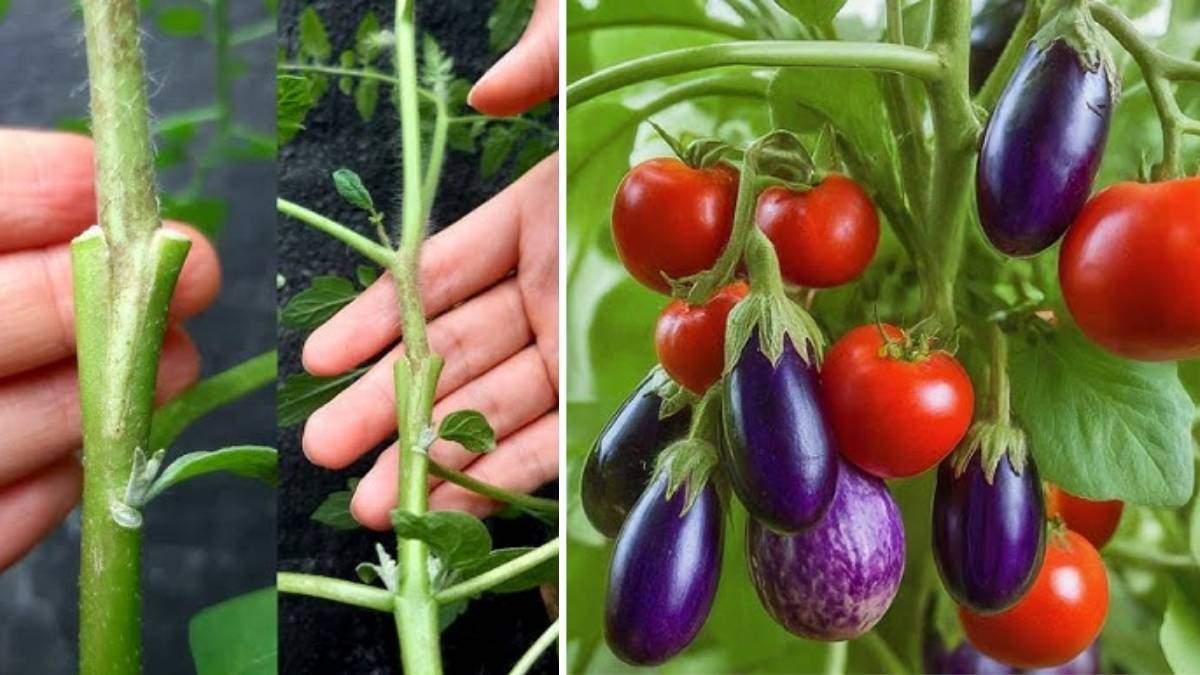


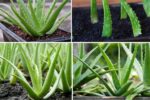
I liked this..I should try it.